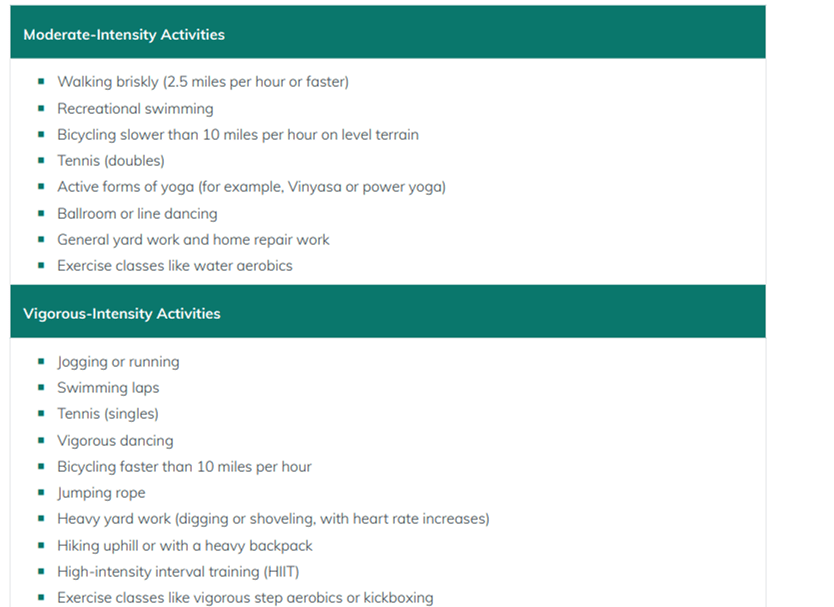Anxiety
- In this review (5), 11 of 16 studies found statistically significant decreases in anxiety following physical activity in a natural environment compared with an urban environment.
Depression
- The review (3) also found 4 out of 12 studies reported statistically significant decreases in depression scores in favor of the natural environment.
Anger
- 6 out of 12 studies considering anger reported statistically significant decreases in the natural environment (5)
- Positive affect improved in favor of the natural environment in six of eight studies (5).
- In this review (5), all 12 studies found physical activity in nature was more beneficial for increased energy or reduced fatigue.
How much and how often was outside exercise needed to find benefit?
- Even though this review found natural environment physical activity had more benefits than urban physical activity, it is important to note that some physical is likely better than no physical activity.
- Due to weather, time constraints, geographic limitations, etc, it may not always be feasible to engage in nature based physical
- For moderate intensity activity, 20 to 42 minutes a day (150minutes to 300 minutes per week).
- For vigorous intensity activity, 10 to 21 minutes a day (75 to 150 minutes a week).
- It may be best to check with your healthcare provider to make sure it’s safe for you’re to start an exercise program.
- Individuals with a history of disordered eating or disordered exercise should check with their health professional before exercising.
- It may be wise to stop exercise and seek professional help if you notice:
- Increased depression, disordered eating, and other mental health concerns due to exercise.
- Injury, pain, or decreased motivation
- Obsessive behaviors
- Other symptoms.
- Exercise may not help without proper nutrition, so it may be wise to learn about proper nutrition and proper exercise technique, and exercise/nutrition plans, before starting to exercise.
- It may be helpful to gradually start exercising to give yourself time to adjust to an active lifestyle.
- It might take weeks months or longer for some people to get used to and enjoy the minimum activity guidelines.
- Occasional weeks without exercise or light activity may be important to prevent injury.
- Figuring out what works best for you may give you lasting benefits.
- u.osu.edu/emotionalfitness
- Patel R. Mental Health For College Students:Practical Life Strategies for Stress, Anxiety, Depression, and More: Backed by Research.
- Cooney, G. M. , Dwan, K. , Greig, C. A. , Lawlor, D. A. , Rimer, J. , Waugh, F. , McMurdo, M. , & Mead, G. E. (2013). Exercise for depression. Cochrane Database of Systematic Reviews, 9. 10.1002/14651858.CD004366.pub6
-
Stubbs, B. , Koyanagi, A. , Hallgren, M. , Firth, J. , Richards, J. , Schuch, F. , Rosenbaum, S. , Mugisha, J. , Veronese, N. , Lahti, J. , & Vancampfort, D. (2017). Physical activity and anxiety: A perspective from the world health survey. Journal of Affective Disorders, 208, 545–552. 10.1016/j.jad.2016.10.028
-
Wicks C, Barton J, Orbell S, Andrews L. Psychological benefits of outdoor physical activity in natural versus urban environments: A systematic review and meta-analysis of experimental studies. Appl Psychol Health Well Being. 2022 Aug;14(3):1037-1061. doi: 10.1111/aphw.12353. Epub 2022 Mar 8. PMID: 35259287; PMCID: PMC9544808.
-
https://www.cdc.gov/physicalactivity/basics/adults/index.htm
-
https://health.gov/sites/default/files/2019-09/Physical_Activity_Guidelines_2nd_edition.pdf
